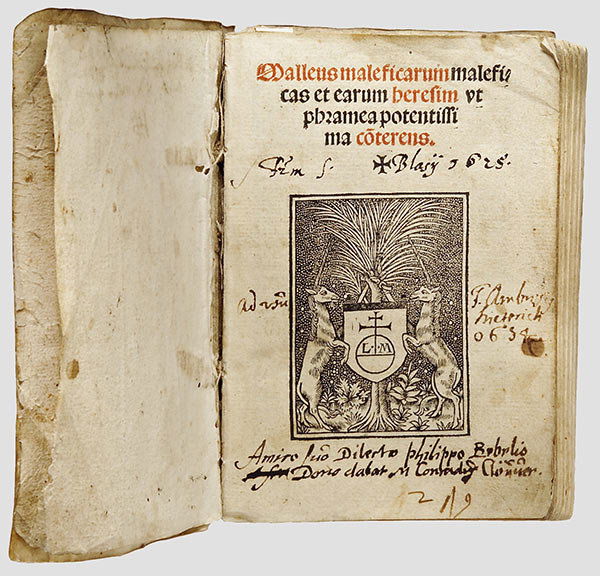The advent of the typographic book had enormous repercussions upon the world. It did not take long for the effects to radiate outward from Gutenberg’s presses in Germany. With books dropping significantly in price and increasing drastically in number, illiteracy began to decline. With that decline came a unification and stabilization of languages: a kind of reverse Tower of Babel effect. When people of a nation were suddenly able to communicate with one another through print, it contributed to nationalism and “the development of the modern nation-state” (Meggs & Purvis, 2016, p. 85).
The most popular book of the time was the Bible, the first book committed to Gutenberg’s presses. Edition after edition was printed, putting the Bible in the hand of the common folk. This resulted in people coming up with their own interpretations of the Bible, something which shattered Christianity into hundreds of sects (Meggs & Purvis, 2016, p. 87). Unfortunately, it also acted like gasoline thrown onto the fires of the Spanish Inquisition, which was sworn to fight heretical viewpoints. It was a time of intense religious xenophobia (New World Encyclopedia, 2014, para. 3).
The second-most popular book of the time was a book called the Malleus Maleficarum or Der Hexenhammer in German (“Hammer of Witches”), written by Dominican Inquisitors Heinrich Kramer and Jacob Sprenger. It is unfortunate timing that this book was written so closely after the invention of the printing press. It became a bestseller. With its wide release, the hate-filled misogynistic views of the two Inquisitors spread rapidly across Europe. It became the main handbook for witch hunters between the years of 1486-1600 (Encyclopedia Britannica, 2010, para. 3), resulting in uncountable torturings and excruciating deaths. The influence of the book even made it to the United States years later, informing the views of the Puritans in Salem, Massachusetts, resulting in even more violent deaths.

Figure 1. Frontispiece from 1519 edition of Malleus Maleficarum. From LiveAuctioneers (2018).
Encyclopedia Britannica. (2010). Malleus Maleficarum. Retrieved February 4, 2018, from https://www.britannica.com/topic/Malleus-maleficarum
N/A (2018). 222: A malleus maleficarum maleficas et earum heresim u. LiveAuctioneers. Retrieved February 4, 2018 from https://www.liveauctioneers.com/item/1299361_222-a-malleus-maleficarum-maleficas-et-earum-heresim-u
Meggs, P. & Purvis, A. (2016). History of Graphic Design (6th Edition). Hoboken, USA: John Wiley & Sons, Inc.
New World Encyclopedia (2014). Malleus Maleficarum. Retrieved February 4, 2018, from http://www.newworldencyclopedia.org/entry/Malleus_Maleficarum
Question
Gutenberg printed from Mainz, and Nuremberg became a major printing centre. Both of these regions were also hot spots for the witch craze during this same period. Do you think this is coincidental? If not, how did one affect the other?
The most popular book of the time was the Bible, the first book committed to Gutenberg’s presses. Edition after edition was printed, putting the Bible in the hand of the common folk. This resulted in people coming up with their own interpretations of the Bible, something which shattered Christianity into hundreds of sects (Meggs & Purvis, 2016, p. 87). Unfortunately, it also acted like gasoline thrown onto the fires of the Spanish Inquisition, which was sworn to fight heretical viewpoints. It was a time of intense religious xenophobia (New World Encyclopedia, 2014, para. 3).
The second-most popular book of the time was a book called the Malleus Maleficarum or Der Hexenhammer in German (“Hammer of Witches”), written by Dominican Inquisitors Heinrich Kramer and Jacob Sprenger. It is unfortunate timing that this book was written so closely after the invention of the printing press. It became a bestseller. With its wide release, the hate-filled misogynistic views of the two Inquisitors spread rapidly across Europe. It became the main handbook for witch hunters between the years of 1486-1600 (Encyclopedia Britannica, 2010, para. 3), resulting in uncountable torturings and excruciating deaths. The influence of the book even made it to the United States years later, informing the views of the Puritans in Salem, Massachusetts, resulting in even more violent deaths.

Figure 1. Frontispiece from 1519 edition of Malleus Maleficarum. From LiveAuctioneers (2018).
References
Encyclopedia Britannica. (2010). Malleus Maleficarum. Retrieved February 4, 2018, from https://www.britannica.com/topic/Malleus-maleficarum
N/A (2018). 222: A malleus maleficarum maleficas et earum heresim u. LiveAuctioneers. Retrieved February 4, 2018 from https://www.liveauctioneers.com/item/1299361_222-a-malleus-maleficarum-maleficas-et-earum-heresim-u
Meggs, P. & Purvis, A. (2016). History of Graphic Design (6th Edition). Hoboken, USA: John Wiley & Sons, Inc.
New World Encyclopedia (2014). Malleus Maleficarum. Retrieved February 4, 2018, from http://www.newworldencyclopedia.org/entry/Malleus_Maleficarum
Question
Gutenberg printed from Mainz, and Nuremberg became a major printing centre. Both of these regions were also hot spots for the witch craze during this same period. Do you think this is coincidental? If not, how did one affect the other?